RIVER
River in my mind, in my work
Exhibited Wagga Wagga Art Gallery, 13 May 2023 to 20 August 2023
In River Nathalie Hartog-Gautier utilises river landscapes to explore colonised environments and ecological devastation. Her experimentations with surface, medium and technique produces marks both subtle and intimate.
The river acts as a metaphor for time not only for its flow, so frequently we see the river in its quiescent state when it has dropped down and doesn't run much, just plops along in pools, but also for its history imbedded in the river, people with memories understand the water rises, breaks through, drowns, and brings chaos and disorder, sometimes food loss.
Over time, human interference with their natural courses has had detrimental impacts on the ecology and the landscape in which it survives.
The river system was a first connection with the landscape, the connection from the sea to the land and the starting point for exploration and colonisation. It is etched with the marks of Australia’s pre-colonial and colonial history. The marks of a sustainable and cyclical approach right through to one of brutal dispossession and ecological devastation.
Paper is both strong and fragile, vulnerable to the forces of nature yet it can last for centuries. Able to be broken down and remade, it is an apt metaphor for the work of time and the fragility of our environment.
Photograph : Andrew Haliday

Vessels 39 paper casting of river rocks and 43 crystal vases
The vases were collected over a 10 year period. They are all different in size and shape. The vases represent the dichotomy between life and death in which cut flowers can survive for only a limited time.
The paper castings of river rocks represent vessels carrying elements of the rivers.
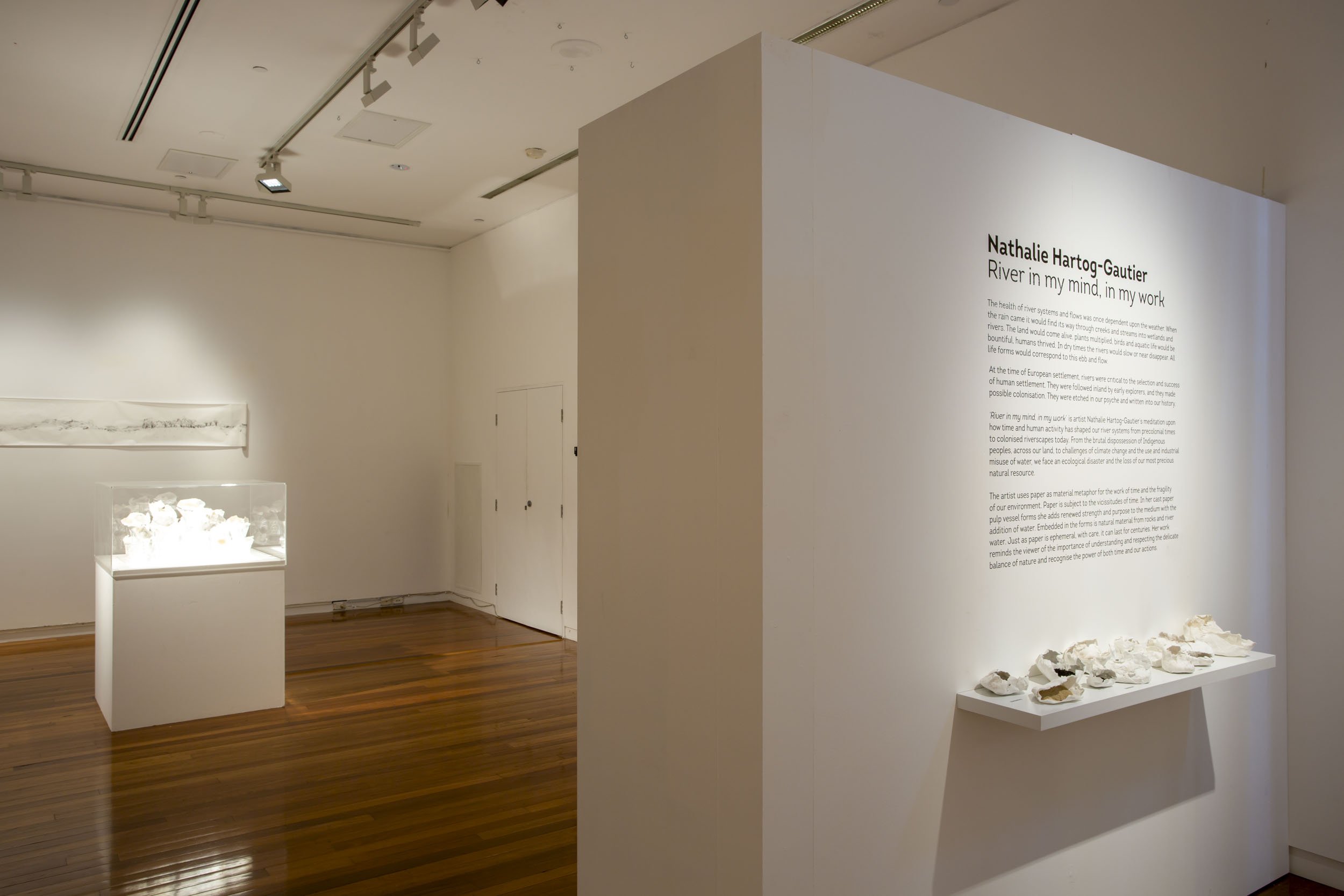

Following the Turon River and Following the Oxley and Tweed River
In 2008 and 2010 I was artist in residence at Hill End. The Turon river coursed its way through an undulating landscape, partly bared by gold digging and land clearing. If only rivers could talk.
Ink drawing on a scroll 38 cm x 1600 cm
Ink drawing on a scroll 38 cm x 650 cm


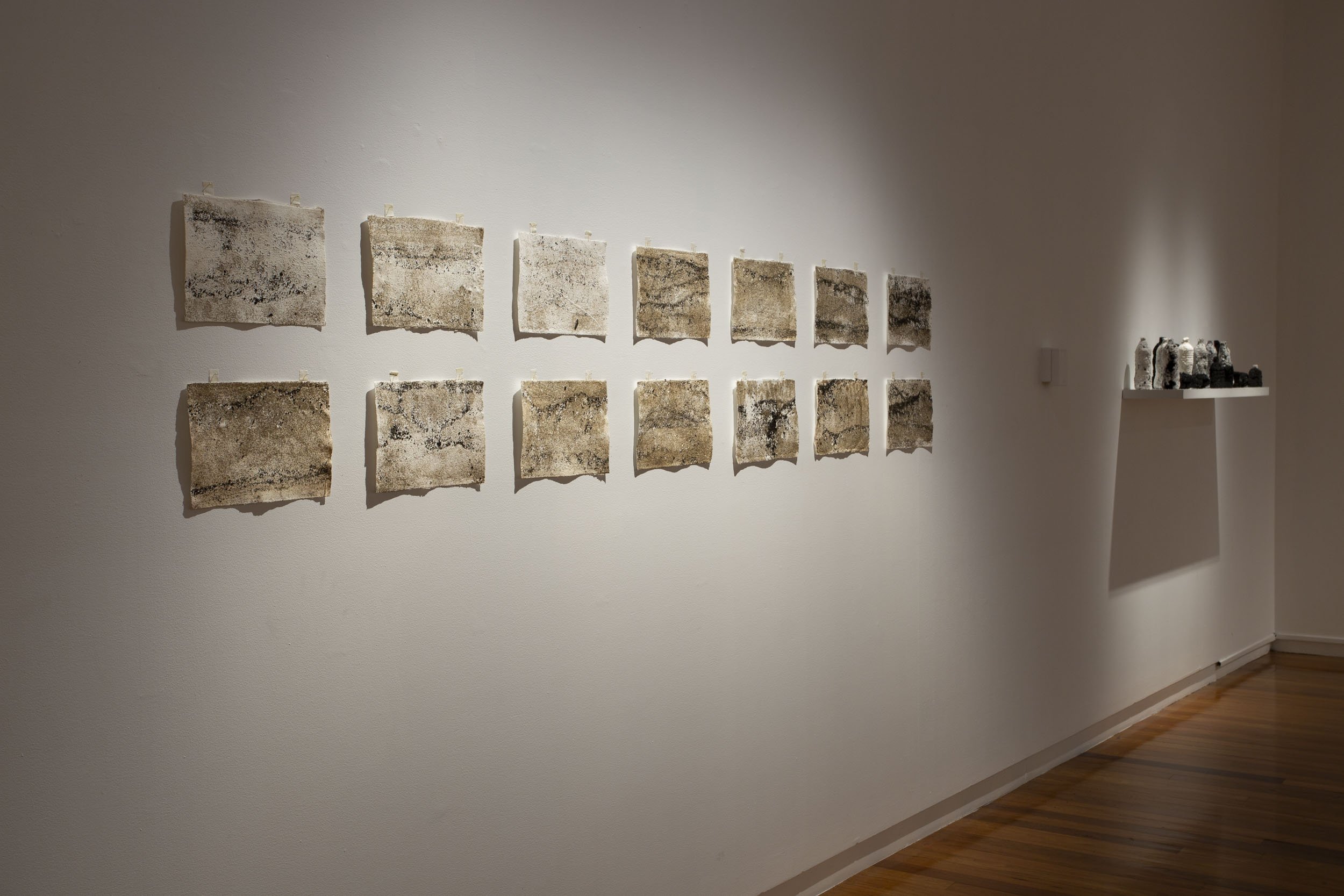

Shoalhaven River
When at Bundanon in 2022 I could still see the remnants of the 2019-20 “Black Summer” bushfire. A black line of ashes and burnt timbers pushed along by the Shoalhaven river, drawing an almost seismic warning line along the foreshore like a warning line. I literally transferred the lines in the sand onto the handmade paper.
14 x A4 (21 x 30 cm)
Imprint of the river foreshore on rag cotton paper hand made by the artist
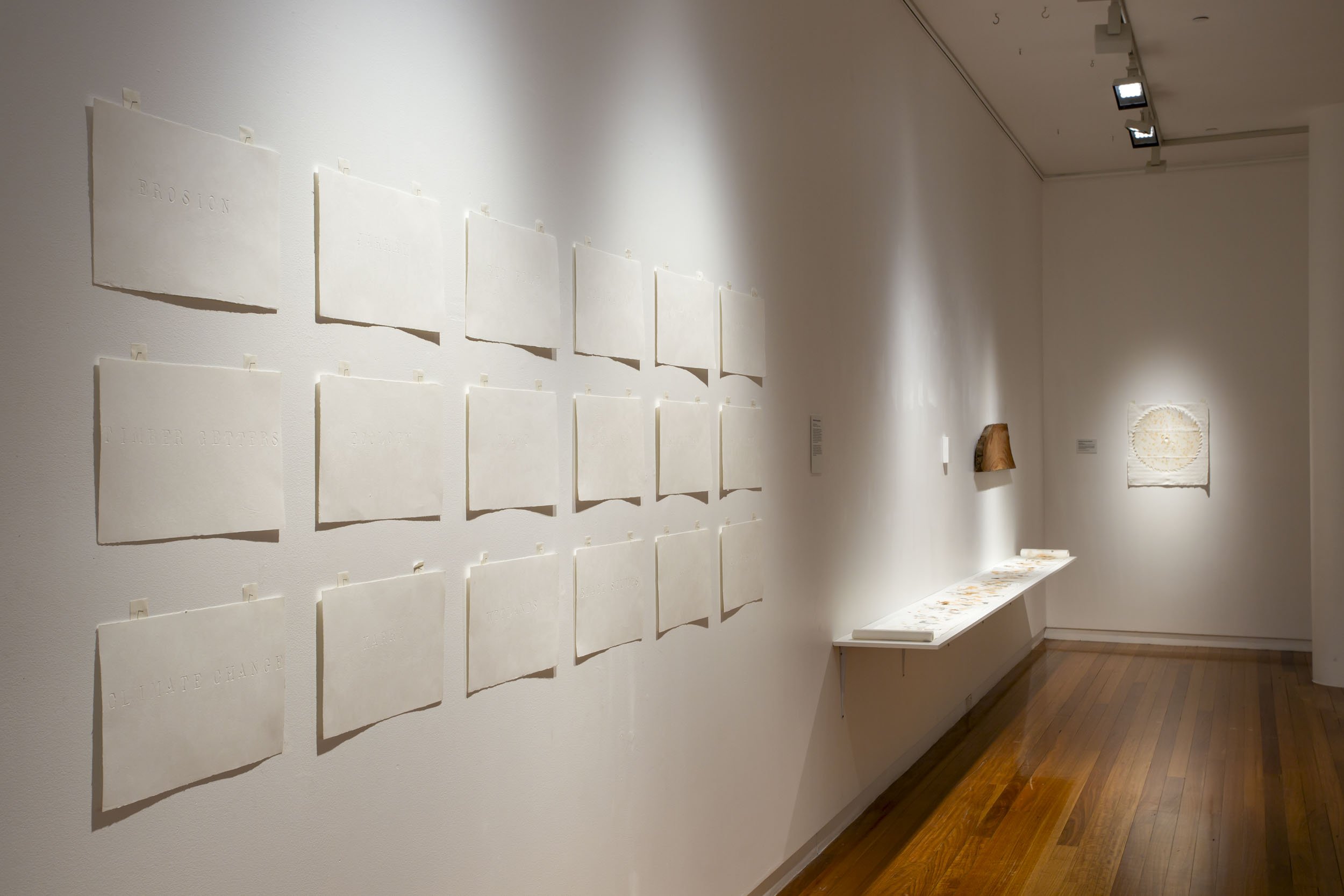
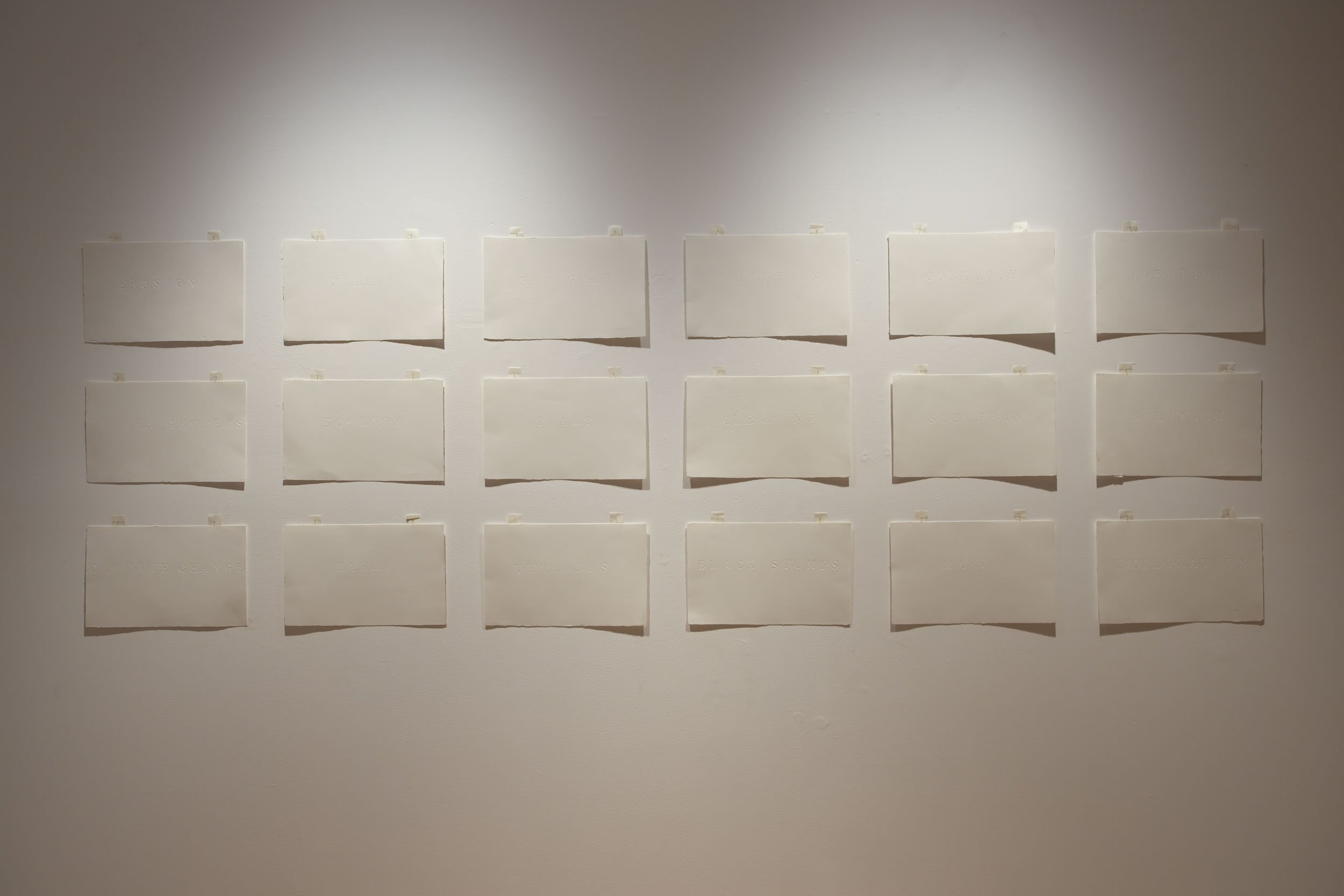
Words from the River
18 x A3 handmade cotton rag paper by the artist
The words come from conversations and my research on the rivers I visited. I wanted the words to look invisible from a distance and become apparent only when the viewer is close to the work.
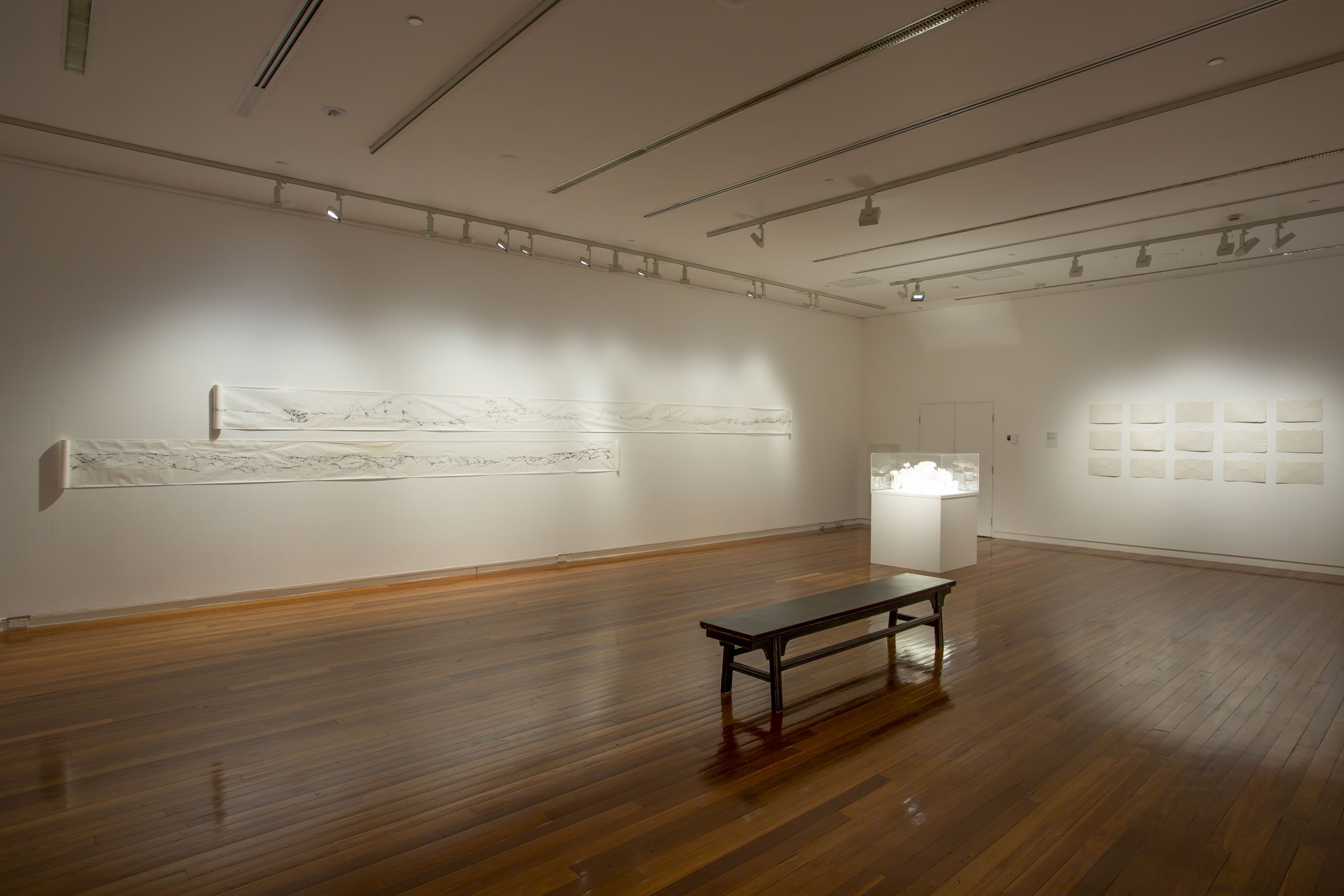
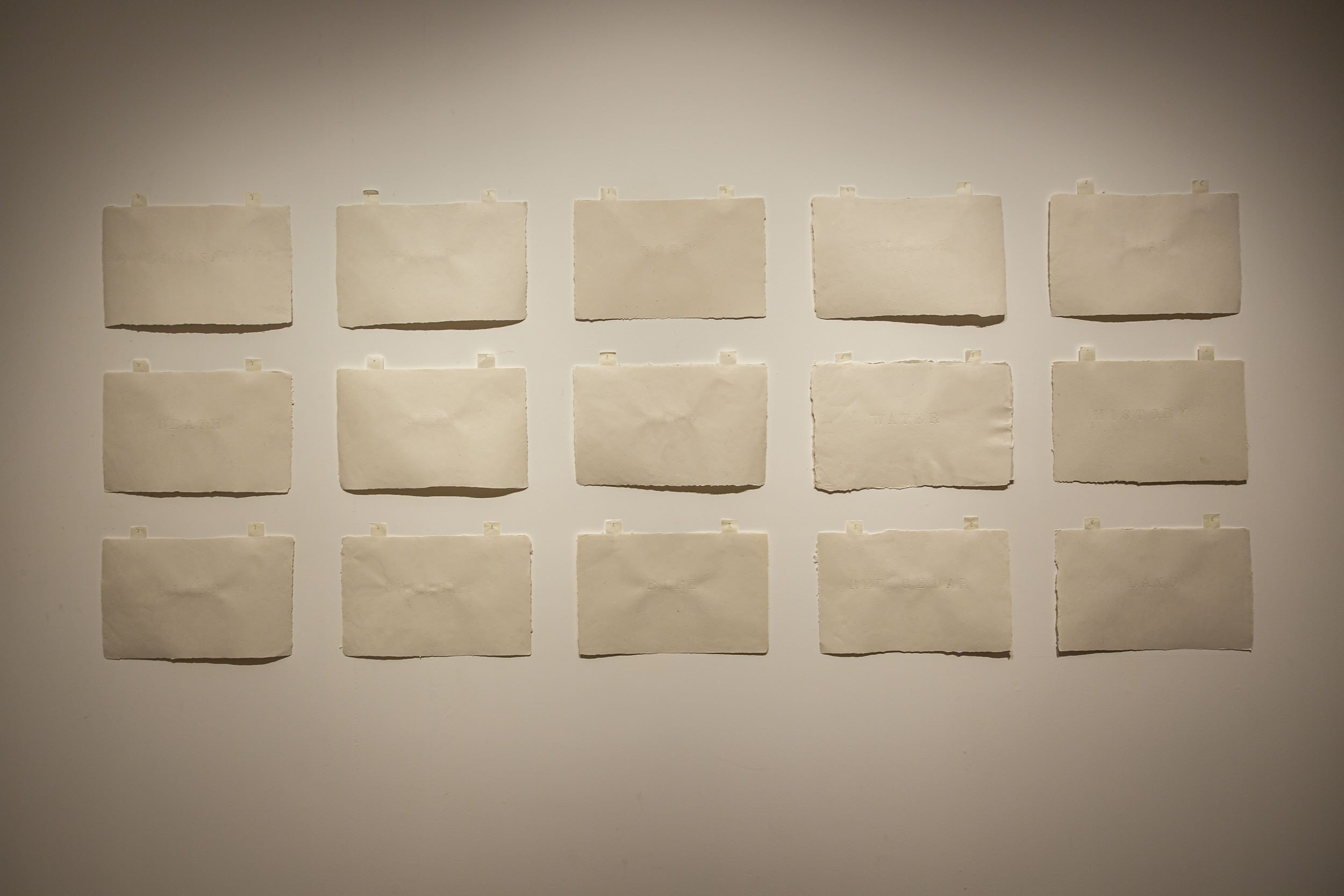
Words from the River
The words come from conversations and my research on the rivers I visited. I wanted the words to look invisible from a distance and become apparent only when the viewer is close to the work.
14 x A3 Handmade mix raw cotton and cotton rag paper by the artist

Cattle branding (courtesy Tweed Regional Museum)
Embossing cotton rag paper handmade by the artist 4 x A4


Red Gold and Timber cutting blade and Tweed River
Artist statement:
Red Gold
Australian red cedar was overly logged with lasting detriment to our environment. Settlements which later became townships were built along the river to process the transport of the timber.
Timber cutting blade
Casting of cotton rag paper handmade by the artist.
Tweed River
drawing with natural pigments, ink and flour on a scroll
30 cm x 700 cm
When at the Tweed Regional Gallery in 2020, I explored the waterways of the Tweed River down to Lismore and the Wilsons River. I witnessed marks left by previous floods and it was hard to imagine that where I was standing would have been underwater. Two years later, in 2022, an even worse flood drowned the town of Lismore. Due to deforestation there is very little to hold the rain and reduce the amount of water running into the rivers.
I found clay along the river and in the town of Murwillumbah and rocks along the river. I used the rocks as my printing blocks and the clay in my pigments. The marks allude to historic footsteps and their imprint in the landscape. The words printed with flour reference arsenic and other toxic substances mixed in flour to poison First Nations people.
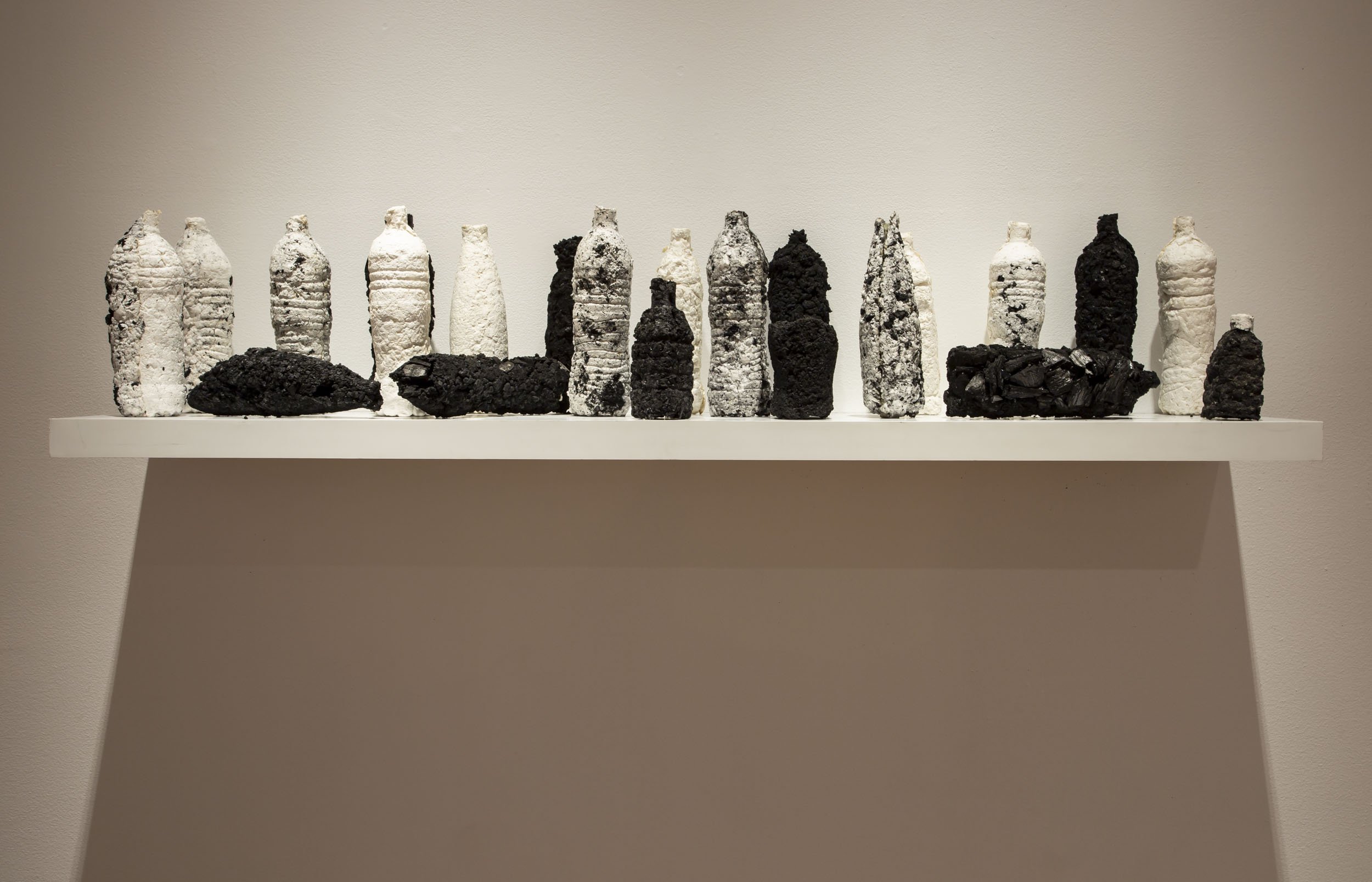
River pollution
The paper casted bottles represent the discharge of untreated waste water into the Coxs and Wollongambe Rivers, changing our waterways from clean to contaminated and in turn affecting our drinking water and farming. The work also addresses our over usage of plastic bottles and the resulting pollution. The United Nation Environment Program describes the over usage as “altering habitats and natural processes, reducing ecosystems’ ability to adapt to climate change, directly affecting millions of people’s livelihoods, food production capabilities and social well-being”.
Rivers are very precious and essential for our survival, for our food and for our environment.

